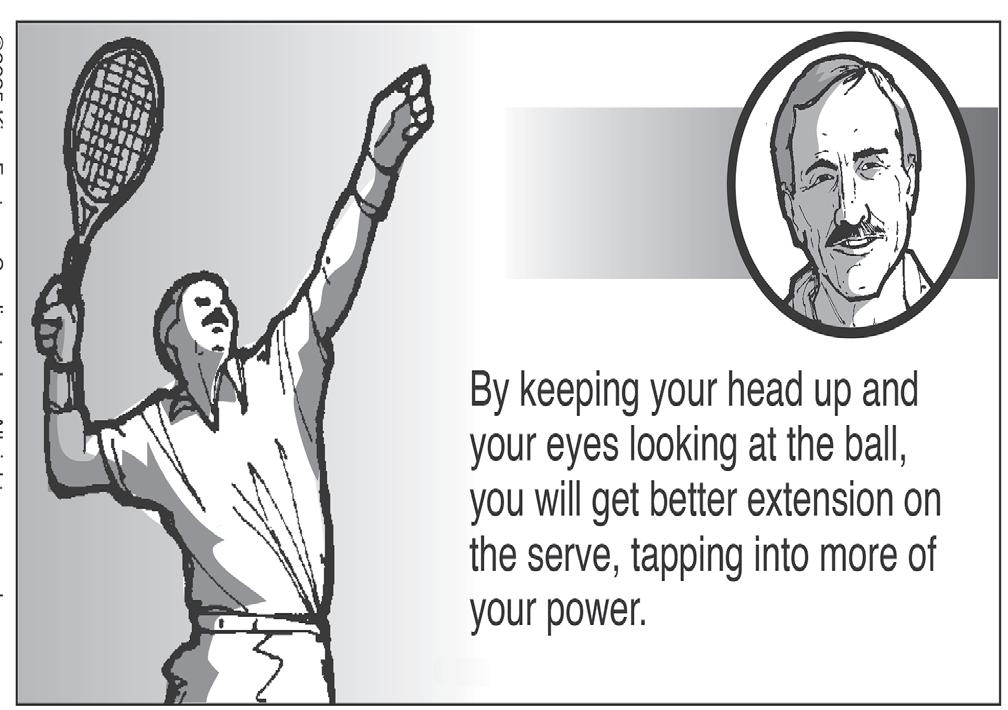TRIVIA NEWSFRONT
(Answers on page 16)
1. TELEVISION: How many castaways are on “Gilligan’s Island”?
2. GEOGRAPHY: Which Asian nation’s nickname is “Land of the Thunder Dragon”?
3. LITERATURE: What is author J.K. Rowling’s real first name?
4. SCIENCE: What is a type of material that can’t carry an electrical charge?
5. U.S. STATES: Which state’s nickname is “The Last Frontier”?
6. MEASUREMENTS: How many quarts are in a half gallon?
7. MOVIES: Which famous landmark is featured in the movie “Rebel Without a Cause”?
8. ANATOMY: What does the cerebellum control in the human brain?
9. U.S. PRESIDENTS: Where is the late Jimmy Carter’s presidential library located?
10. HISTORY: When did the Great Fire of London occur?
For those who enjoy extreme sports, volcano surfing should definitely be on your list. Follow along as Tidbits explores this thrilling, invigorating, but dangerous sport.
• If ever there was an adventurous and hazardous sport, it’s volcano surfing! Equipment is a board or sled specially designed for navigating through the rough terrain found on the abrasive slopes of a volcanic mountain. The boards are similar to a snowboard but contain an extra layer of lamination to reduce friction.
• Durable jumpsuits are worn to protect the body from abrasions and burns. Goggles are required to shield the eyes from the wind, ash, and debris, and a face cover prevents dust and ash from entering through a surfer’s nose and into the mouth.
• Surfers aren’t descending mountains on a liquified lava flow, but rather on the brittle and frequently very hot slopes of a recent volcano event. There aren’t a great number of locations where the sport can be practiced since the mountain must be an “active” volcano where a recent eruption has generated a suitable hardened lava slope.
• The sport originated in the early 2000s on Cerro Negro, an active volcano in Nicaragua, which has become one of the most popular spots for this type of extreme surfing. It’s Central America’s youngest volcano, having first erupted in 1850, a massive eruption that lasted six weeks.
• Cerro Negro has erupted 23 times since then, the most recent in 1999. Another larger-scale eruption is predicted in the near future. The surfing is prefaced by an hour-long hike to the 2,388-foot (728 m) high summit. The actual slide takes less than five minutes, with an average speed of around 45 mph, although the official record exceeds 60 mph.
• The braver surfers tackle Mount Yasur on the
South Pacific Ocean island of Vanuatu. This volcano is much more dangerous, with several eruptions occurring every day – in fact, every day continuously for several hundred years. Yet the mountain can be approached safely as its eruptions are relatively mild explosions of gases, ash, and volcanic bombs. However, the danger of molten lava is very real, and glowing lava is often visible at the crater’s rim.
• The last confirmed eruption of Japan’s 12,389-fthigh (3,776-m) Mount Fuji was in 1708. Located on the island of Honshu, it’s Japan’s highest mountain, offering a spot for volcano surfing. But because the slopes are dangerous, the government has restricted access. And because it’s considered active, surfers must obtain special permission to climb it.
• In addition to the hazard of cuts, abrasions, and burns, there is a danger of breathing poisonous gases from a volcano, which can cause headaches, dizziness, increased heart rate, and difficulty breathing. Another potential danger is histoplasmosis, also known as “caver’s disease,” a fungal infection that causes fever, cough, and severe shortness of breath.
• Those surfers with a need for an extreme adrenalin rush choose active volcanoes that are constantly erupting while releasing lava and lethal gases. The more conservative surfers choose a relatively safe dormant volcano. A volcano is considered dormant if it has not erupted since the last ice age, which ended approximately 10,000 years ago, but it is certainly not impossible that it might erupt again in the future.
• While volcano surfing can be a thrilling experience, it is not without risks. Volcanic ash and rocks can be dangerous, and riders can suffer cuts, bruises, or even serious injuries if they fall off the board on the hot, rugged surface.
Seven.
Bhutan.
Joanne.
WARNING: Reading Tidbits
bronze coated in 24k gold. Production cost of each statuette is around $400.
• During the World War II years, the Oscar statuettes were composed of painted plaster because all metals were being used for the war effort. After the war, the plaster Oscars were returned and replaced with metal ones.
• The more-than-10,500 members of the Academy are eligible to nominate films and actors. Members include not only actors, but also writers, directors, producers, costume designers, makeup artists, and other industry professionals. No one can apply to the Academy, but must be sponsored by other members.
• While all can nominate for Best Picture, they can only nominate within their own work category for the remaining awards. For all but Best Picture, the nominee with the most votes wins, but for the Picture award, voters rank their first, second, third, fourth, and fifth choices, and a shortlist of 15 is created, then narrowed down to five. Preliminary voting for the March event begins in December.
• And the winner is…! The Oscar winners’ names are contained in a sealed envelope, a tradition that only began in 1941. That year the Los Angeles Times broke the rules and published the names of all the winners prior to the ceremony. So with great indignation, the rule of the sealed envelope began and has strictly been followed ever since!
• No one has won more acting Oscars than actress Katharine Hepburn. Nominated for a total of 12, she won four over the course of her 67-year career, with the first in 1933 as Best Actress in “Morning Glory.” She nabbed the Best Actress award again in 1967, 1968, and 1981, with a 48-year span between first and fourth. Her final screen appearance was at age 87.
• Six years after her death in 2003, her four Oscar
statuettes were gifted from her estate to the Smithsonian’s National Portrait Gallery where they are on display on the museum’s third floor.
• Although Katharine Hepburn has the most acting Oscars, she doesn’t hold the record for the most acting nominations. That honor goes to Meryl Streep, who has been nominated 21 times, with three wins.
• Legendary costume designer Edith Head has eight statuettes from 35 nominations. Her designs spanned the full gamut of film genres – from Audrey Hepburn as a beautiful socialite in “Breakfast at Tiffany’s” to the Western “The Man Who Shot Liberty Valance” to the biblical costumes of “The Ten Commandments.”
• Edith Head has dressed Elizabeth Taylor, Grace Kelly, Paul Newman, and John Wayne, among scores of others. When applying for her first position at Paramount Pictures, she “borrowed” some sketches that she passed off as her own. Even though the studio suspected she had faked her portfolio, they hired the 26-year-old designer anyway, and Head remained at Paramount for 44 years. While many of her designs were wild, bright, and colorful, Head herself wore only black, white, beige, and brown.
The movie rating system was established in 1968 by the Motion Picture Association. Since that time only one G-rated film has captured the Oscar for Best Picture, ‟Oliver,” in 1969.
• Anthony Hopkins was the winner of the Best Actor Oscar in 1992 for his role as serial killer Hannibal Lector in “The Silence of the Lambs.” Yet Hopkins only appeared on screen for 15 minutes of the movie’s 118 minutes runtime. In addition to Hopkins’ win, the film earned four other Oscars – Best Picture, Best Director, Best Writer, and a win for Jodie Foster as Best Actress.
• Three actors are tied for the honor of the most acting wins by a male actor – Jack Nicholson, Daniel Day-Lewis, and Walter Brennan, each with three Oscars. Nicholson has the record for the most nominations, with 12.
• Marlon Brando won Best Actor for his role in “On the Waterfront” in 1954, but in 1974 refused the same award for his role in “The Godfather” His refusal was in protest against the perceived mistreatment of Native Americans in Hollywood. Instead, he sent Sacheen Littlefeather to accept the award in his place. Littlefeather was an actor
and activist who spoke out about the negative depiction of Native Americans in Hollywood films. She read a written statement from Brando that explained why he couldn't accept the award.
• When Kathryn Bigelow won the Oscar for Best Director for the 2008 war action thriller “The Hurt Locker,” she became the first woman to capture that honor. Bigelow not only edged out four other directors – she beat her ex-husband James Cameron who was competing in the same category for his film “Avatar.”
• The category of Best Picture wasn’t always known by that name. It started out as Outstanding Picture, changing to Outstanding Production in 1931, Outstanding Motion Picture in 1942, Best Motion Picture in 1945, and finally Best Picture in 1963.
• It’s a family affair! Actress Liza Minnelli is the
1. Who is the youngest person to win an Oscar?
2. What person has won more Oscars than any other?
and ‟The Lord of the Rings: The Return of the King” (2003). Close behind with ten is ‟West Side Story” (1961).
Three films are tied for the most Academy Awards won, all with eleven Oscars: ‟Ben-Hur” (1959), ‟Titanic” (1997),
By Lucie Winborne
* Johnny Cash’s estate was approached by an advertising company asking for permission to use “Ring of Fire” in an ad for hemorrhoid cream. The request was refused.
* Tulips can continue to grow as much as an inch per day after being cut.
* A man with severe OCD and a phobia about germs attempted to commit suicide with a gun to his head. Instead of killing him, the bullet eliminated his mental illness without any other damage.
* An unscripted streaker suddenly ran naked across the Oscars stage in 1974 during David Niven’s presentation, making it one of the ceremony’s most infamous moments. But the loudest audience applause came when Nivens quipped, "The biggest laughs that man will get in life is by publicly displaying his obvious shortcomings."
* In 1911, Elmer McCurdy robbed a passenger train he thought contained thousands of dollars, and was shot by lawmen after making off with just $46. His unclaimed corpse was then embalmed and sold to a traveling carnival. It would be used as a prop or attraction in haunted houses and wax museums for the next 66 years (even showing up on the set of “The Six Million Dollar Man”), until he was finally buried at the famous Boot Hill cemetery in Dodge City, Kansas.
* Vanilla flavoring is sometimes made with beaver urine.
* A statue of Nikola Tesla in Silicon Valley radiates free Wi-Fi. It was created as an homage to his vision for wireless communication.
* By the time they have been retired for two years, 78% of former NFL players have gone bankrupt or are under financial stress because of joblessness or divorce. ***
Thought for the Day: “The beautiful thing about life is that we will never reach an age where there is nothing left to learn, see or be; it’s magical, really.”
-- Dulce Ruby
by Mary Hunt
Will I Inherit My Parents’ Debts?
This week, as I reached into the mailbag, I pulled out two questions, neither of them with easy answers. I was tempted to set them aside and try again, but I decided to tackle both, knowing that my letter-writers are not the only ones facing these kinds of financial situations.
moving home (after five years of being on his own) with few possessions and an unbelievable amount of debt.
My husband and I don’t know how to guide or support him through this period. We do not plan to assist him outright with money, and we definitely have a plan for the living situation.
(c) 2021 King Features Synd., Inc.
Everyday CHEAPSKATE
But what steps should he take so we know he is heading in the right direction financially? We aren’t sure what financial recovery looks like.
-- Ron and Cidney
by Mary Hunt
DEAR MARY: If my parents are in debt and they die, who pays the bills? I am terrified of inheriting my parents’ debts. -- Bethany
Dear Bethany: First, let me be clear that I am not an attorney, so what follows is my opinion:
When a person dies, creditors can only look to his or her estate (the assets that person owned upon his or her death) for the payment of debts.
If the debts are shared legally with another person still living, as in the case of a spouse in a community property state, or someone else who can sign on the account, that person may be responsible for part or all of the debt.
Having said that, generally, unless you are a cosigner with your parents on their credit cards and other debts, you could not be held responsible. And their creditors could collect only to the extent your parents left assets in their estates. If they owe $50,000 but die leaving only $10, that’s all their creditors could expect to recover.
And now for the bad news. If your parents do leave assets that you will inherit, their creditors get to stand in line ahead of you.
Let’s say your parents leave a home, cars, personal property, stocks, bonds or other items of value. The executor of their estate will be required to liquidate or sell them to pay off their debts. Then, if there’s anything left, it is distributed to the heirs according to the terms of their wills and/or trust.
So, while you would not have to pay your parents’ debts directly to their creditors, what you might have otherwise inherited will be reduced by what they left owing.
Contact the Consumer Protection Division, office of attorney general in your state’s capitol to find out the specific laws governing your state.
DEAR MARY: Our 25-year-old son is
Dear Ron and Cidney: The only way I know to handle this kind of situation is with tough love. That being said, I suggest you create a list of house rules, which he must abide by if he moves back. Failure to do so means he must leave.
Rule No. 1: He must get a job. Any job. Maybe two.
Rule No. 2: He must enroll in credit counseling with a reputable organization (find the closest to you at the National Foundation for Credit Counseling website) that offers a debtmanagement program. He must keep every appointment and be fully accountable to his debt counselor.
Rule No. 3: No credit cards, no debit card. One ATM card only. Money orders will accommodate bills to be mailed.
Rule No. 4: All adult children living under your roof must pay reasonable room and board.
These four rules will force him to live a cash lifestyle and get him onto a debt repayment path that is being monitored and managed by someone other than his parents.
Last, make it very clear that you are not going to bail him out with any loans, advances or other forms of aid. That’s what I would do.
As a mom, I know it will be harder for you to follow the house rules than for him. But that will be the key to his success.
I wish you well -- all three of you! This could be the turning point to get him back on track and successfully out on his own.
* * *
Mary invites you to visit her at EverydayCheapskate.com, where this column is archived complete with links and resources for all recommended products and services. This column will answer questions of general interest, but letters cannot be answered individually. Mary Hunt is the founder of EverydayCheapskate.com, a frugal living blog, and the author of the book “Debt-Proof Living.”
While movie fans await the results of this year’s Best Picture, Tidbits focuses on the very first movie to ever win the coveted award.
• “Wings” was released in 1927, the story of two World War I combat pilots who both fall for the same woman. When it was initially produced, it was a silent picture, but as technology was quickly improving, it was re-released in 1928 with synchronized sound with a musical score and sound effects added.
• The 144 minute-long “Wings” is the only silent film to win the Oscar for Best Picture, which was called Outstanding Picture at the time. The film also captured the award for Best Engineering Effects.
• Actress Clara Bow was Paramount’s biggest star in 1927, and the script was written around her. William Wellman was chosen as the director, because he was the only Hollywood director who had World War I combat pilot experience. Both of the pilot actors had served I military aviators as well.
• William Wellman was a fighter instructor who had shot down three German aircraft, which aided him in presenting view of the combat scenes. film in 1920, and went on to as a director, producer, screenwriter,
• Wellman was the screenwriter for the original 1937 “A Star is Born,” and received the Oscar for Best Story. He was credited with all three remakes of the film in 1954, 1976, and 2018. Wellman directed upwards of 80 films.
button.
ADVERTISING PROOF
• J.S. Zamecnik composed the musical score for “Wings” entirely on a Wurlitzer pipe organ. This composer and conductor went on to write the scores for more than 40 more films.
Final Changes DUE:
• Filming commenced on September 7, 1926 at San Antonio’s Kelly Field. The base was one of 32 training camps established following the entry of the U.S. into World War I, and was used as a flying field, flying school, mechanics school, and supply depot.
Please review carefully. Double check: Phone Number(s) Spelling
• 30-year-old costume designer Edith Head was employed in the wardrobe design department, having come on board at Paramount in 1924, where she remained for the next 44 years. Although Head designed for Clara Bow, her name was not listed in the credits.
• The climax of “Wings” was the depiction of the Battle of Saint-Mihiel, a four-day attack by Allied Forces led by General Pershing against Germany in northeastern France. William Wellman rehearsed the battle scenes for ten days before filming, employing 3,500 infantrymen on a battlefield on location. The scene was shot in one continuous five-minute take.
• Hundreds of extras plus 300 pilots were used in the filming, many brought in from the United States Army Air Corps, along with planes supplied by the Corps. Kelly Field continued as an operational Air Force Base until its official closure in 2001.
Contact your Tidbits representative immediately with changes or Property of AdVenture Media, Inc.
Office: 760-320-0997 email: valleybits@msn.com Fax:
• When filming wrapped up on April 7, 1927, costs of production were $2 million, about $34.5 million in today’s dollars. The movie was so well-loved that it played at New York City’s Criterion Theater for more than two years, attended by tens of thousands of film lovers.
• “Wings” paved the way for aerial photography as the first film to utilize the newly-invented camera mounts that were secured to plane fuselages. Motor-driven cameras were also used for the first time, obtaining shots of actors while flying. Cameras were mounted in the front of the
by Dana Jackson
Q: Is it true that “Buffy the Vampire Slayer” is coming back? Will it be a TV series or a movie? -- G.A.
A: Sarah Michelle Gellar, who rose to stardom after playing the titular role in the WB series “Buffy the Vampire Slayer” from 19972003, has confirmed that a reboot series is in its early stages of development. The actress shunned the idea of such a project for years, especially after the show’s creator Joss Whedon was canceled by Hollywood for numerous allegations of misconduct.
However, Gellar changed her mind recently when one of the original show’s executive producers, Gail Berman, introduced her to Oscar-winning director Chloe Zhao (“Nomadland”). Both women convinced Gellar that their vision was one that would honor Buffy and her legacy.
According to the Los Angeles Times, the new series, which is being developed for Hulu, will center on a new, younger slayer, much like Buffy was as a teen. Gellar will also star, but it’s not
known yet which beloved characters from fictional Sunnydale, California, will also return.
Q: Why is there not going to be a new season of “The Bachelorette” this year? Has it been canceled? -- M.E.
A: No, “The Bachelorette” hasn’t been canceled, but it has been put on hiatus. It normally airs a new installment in the summer following “The Bachelor,” which recently premiered on ABC for its 29th season. However, no reason has been given for why its female counterpart is being put on the shelf indefinitely.
The ratings for Jenn Tran’s season last year were no worse than Charity Lawson’s the year before, but Tran did have a heartbreaking ending. She proposed to her chosen suitor Devin Strader, only to have him break up with her (via phone no less) before the “After the Final Rose” live reunion. Fortunately, Tran ended up meeting her current beau, Sasha Farber, when she was paired up with him on “Dancing with the Stars.”
According to Entertainment Weekly, this isn’t the first time the show has taken a long break. The magazine stated: “After three consecutive January premieres, ‘The Bachelorette’ took two years off in 2006 and 2007 before returning with season four in 2008, which, in turn, resulted in the show moving to a summer launch date.” As for who will eventually follow in Tran’s footsteps, we’ll just have to wait and see!
***
Q: Who is the new female judge on “The Voice”? I know she’s a singer, but I’ve never heard of her before. -- S.K.
A: While she looks much younger, 31-yearold Kelsea Ballerini is a new coach on the latest season of the singing competitive reality show “The Voice.” Growing up in Knoxville, Tennessee,
Ballerini became the first solo female country music artist to earn a No. 1 hit with her debut single (“Love Me Like You Mean It”) since Carrie Underwood accomplished the same.
In the next decade, Ballerini would go on to be nominated for five Grammy Awards. Underwood, who is now 41 years old, has taken home eight Grammys since winning “American Idol” in 2005.
* * *
Send me your questions at NewCelebrityExtra@gmail.com, or write me at KFWS, 628 Virginia Drive, Orlando, FL 32803. (c) 2025 King Features Synd., Inc. (Go
Courtesy of Warner Bros.
Sarah Michelle Gellar as Buffy in “Buffy the Vampire Slayer.
Good Recipes from
Cranberry Pan Sauce Over Chicken Breasts
Tasty cranberry and balsamic-vinegar pan sauce is a great way to liven up ordinary chicken breasts and Brussels sprouts.
1 container (10 ounces) Brussels sprouts
1 tablespoon plus 1 teaspoon olive oil
1 teaspoon salt
1/4 teaspoon ground black pepper 2 tablespoons all-purpose flour
4 medium skinless, boneless chickenbreast halves (about 1 1/4 pounds)
2 cups cranberries
1/4 cup sugar
1/4 cup balsamic vinegar
1. Heat oven to 450 F. Trim Brussels sprouts; cut lengthwise into thin slices. In 15 1/2-by-10 1/2-inch jelly-roll pan, toss sprouts with 1 tablespoon oil, 1/2 teaspoon salt and 1/8 teaspoon pepper to coat. Spread evenly in pan; roast 15 to 20 minutes or until tender and browned at edges.
2. Meanwhile, in nonstick 12-inch skillet,
Wanna Sell Your Car?
heat remaining oil over medium-high heat until hot. On waxed paper, combine flour and remaining salt and pepper; use to coat chicken.
3. Add chicken to skillet and cook 6 minutes. Reduce heat to medium; turn chicken over and cook 6 to 8 minutes longer or until juices run clean when thickest part of breast is pierced with tip of knife. Transfer chicken to platter; keep warm.
4. To skillet, add cranberries, sugar, vinegar and 3/4 cup water; heat to boiling over medium-high heat. Cook until sauce thickens slightly, about 5 minutes. Serve chicken with sauce and Brussels sprouts. Makes 4 main-dish servings.
Each serving: About 320 calories, 7g total fat (1g saturated), 36g protein, 30g carb., 5g fiber, 82mg cholesterol, 690mg sodium.
Chiles Rellenos Casserole
Green chiles and Cheddar cheese are baked into eggs for a healthy take on a classic dish.
6 large eggs
1 cup reduced-fat milk
2 tablespoon all-purpose flour
1/4 teaspoon sweet paprika
Salt
Pepper
2 can whole green chiles
1 medium red pepper
4 ounces extra-sharp Cheddar cheese 1/2 cup packed fresh cilantro leaves
1. Heat oven to 350 F. Grease shallow 2-quart ceramic or glass baking dish.
2. In large bowl, with wire whisk, mix eggs, milk, flour, paprika, 1/4 teaspoon salt and 1/2 teaspoon freshly ground black pepper until well-blended. Stir in chiles, pepper, Cheddar, and half of cilantro; pour into prepared dish.
3. Bake casserole 35 to 40 minutes or
until puffed and golden brown, and center still jiggles slightly.
4. Cool in casserole in dish on wire rack 10 minutes. Garnish with remaining chopped cilantro and cut into squares or wedges to serve. Makes 4 main-dish servings.
For hundreds of triple-tested recipes, visit our website at www.goodhousekeeping.com/recipes/. (c) 2025 Hearst Communications, Inc.
rights reserved
By John Allen
DIAMOND LIL
by Brett Koth
Donald Duck by Walt
Stories with My Valentine
First, an apology: I don’t think there will be anything about Social Security in today’s column. But after 28 years of writing these weekly articles (that would be more than 1,450 columns about Social Security), I hope you’ll indulge me around this Valentine’s Day as I spend one column sharing a couple of funny stories from the early days of my 50-year-and-counting marriage to my valentine: Becky Margenau.
We met in 1973 when I left my hometown of Sheboygan, Wisconsin, to begin my first posting with the Social Security Administration at their newly opened branch office in Litchfield, Illinois. One of my first jobs was to verify Medicare numbers for a clerk in the local hospital’s billing department. That clerk was Becky Bachstein, who called me daily to verify numbers for hospital patients on Medicare. Eventually, Becky’s matchmaking boss invited me out to the hospital to meet Becky. Long story short: A few months later, we were married!
Not long afterward, I transferred to a Social Security office in Chicago. Becky and I found an apartment in the leafy suburb of Oak Park, former home to such luminaries as Frank Lloyd Wright and Ernest Hemingway. Becky got a job in the billing office of West Suburban Hospital, right on the dividing line between Oak Park and Chicago. And after a while, she moved from the billing department to a maternity ward. (Did I mention she was pregnant?) And the delivery of our son, Mike, in March 1976 makes for an interesting story.
After about three hours in a labor ward, Becky was finally wheeled into the delivery room. I went along. And back then, it was still kind of an experiment to have the father in the delivery room. We were in for a bit of a surprise when we got there. West Suburban was a teaching hospital, and the delivery room was actually a small amphitheater. The seats were filled with about 20 or 25 student doctors and nurses. I don’t want to get too graphic here, but imagine poor Becky, her legs up in stirrups, with a small crowd staring down at her!
Becky’s doctor was a very short, thin woman. That becomes important because the delivery was getting difficult. The doctor had to use forceps
to try to deliver the baby. But being so small and slight, she simply didn’t have the physical strength to bring the baby out! We noticed concerned looks. We saw doctors and nurses huddling and talking. Then one of the nurses ran out of the room! What was going on?
We soon learned she was sent to get a “relief doctor.” This doctor turned out to be a huge woman who spoke with a heavy German accent. When she stormed into the room, she looked around and almost barked at me, saying, “Who are you?” When I timidly explained I was the father, she ordered me out of the room. I will always remember her loud Germanic command: “You vill get out ov here!”
Of course, now I was really scared. Becky later said she wasn’t worried. She just wanted things to be over with! I remember walking down the hall after leaving the delivery room when a nurse came running for me and said, “Come on back, you have a son!”
Becky told me later that the big doctor just used her heft and muscles to yank little baby Mike out. (There’s probably a more delicate way of putting that.) And poor Mike was born with a pretty ugly and not too delicate dent in his head from the use of the forceps by the Teutonic practitioner who must have skipped the “bedside manner” class in medical school!
Anyway, just a few weeks later, we’d be back in a hospital with little baby Mike -- but this time in Billings, Montana. And therein lies another story.
In the months leading up to Mike’s birth, I had been trying to get myself transferred out of messy Chicago. I was essentially willing to go anywhere. And I ended up getting sent to Billings, Montana!
Mike was just two weeks old when we left Chicago. He traveled across the country in a blanket-lined chicken box in the back seat of my old Pontiac. I had picked up the box from a local grocery store before we left. The box said it had once held a dozen frozen chickens. (This was long before baby car seats were common or required.)
1. The book of Levi is found in the a) Old Testament b) New Testament c) Neither
2. From Matthew 5:5, "Blessed are the meek, for they shall inherit _______ ? a) Righteousness b) Eternal life c) Great reward d) The earth
3. In which book's 10th chapter do we find the parable of the good Samaritan? a) Matthew b) Mark c) Luke d) John
After a bit of a scary wintertime ride in our old car across the frozen plains of Minnesota and South Dakota, we pulled into Billings, Montana, on a Saturday afternoon. We checked into a pleasant mom and pop motel in a residential area. That evening, our first night in Billings and our first night in this motel, and one of our first nights a thousand miles from grandmas (who knew something about parenting), Mike started to cry and wouldn’t stop. He cried and cried. And it got louder and louder, or so it seemed, what with the thin walls of a motel room. Nothing we did -from rocking him to feeding him to singing to him -- quieted him down. Eleven p.m. -- Mike was crying. Midnight -- Mike was crying. One a.m. -- more crying! What could we do?
We called our mothers back in the Midwest and woke them up. But of course, they were of little help being a thousand miles away. So at about 1:30 in the morning, we finally decided to head for a hospital.
When we got there, the emergency room waiting area was full of drunks and gunshot victims and other assorted Saturday night maladies. There is a chance that time and my imagination might be playing tricks on me, but I even think there was a guy with an arrow sticking out of his arm! Remember: We were in the Wild West!
We went to the receptionist and explained our dilemma. She tried to talk us into going back home, telling us we would have to wait around for several hours to see a doctor. We told her we were desperate, didn’t have a home and would be willing to wait.
Reluctantly, she started filling out registration and insurance papers. This was before computers were commonplace, so she was using a manual typewriter. I sat at her desk, holding baby Mike in my arms, while she typed away and Mike cried away.
But all of a sudden, little baby Mike squirmed and got a funny look on his face. And then he threw up. And not just little dribble-y baby puke. No, this was a serious case of projectile vomit! It went all over the receptionist’s desk, her clothes, her typewriter, etc. She was in shock. Becky and I were in shock. Who knows, maybe little Mikey was in shock.
The woman jumped up crying, “Oh my God, follow me!” And so we ran behind her as she scrambled to find medical help. We went right into an examining room where a doctor rushed in and checked Mike over. And guess what his prognosis was? A serious disease? A life-threatening illness? Nope. The doctor said, “He’s got a cold!” He told us it was a bad cold, pretty severe for a 2-week-old baby, but it was still just a cold. We were sure relieved. We thought our young son was suffering from some strange disease, and he turned out to have a bad case of the sniffles!
4. From Proverbs 29, what happens when evil rulers have authority? a) The people mourn b) Strife abounds c) Lawlessness prevails d) Peace leaves the land
5. In Numbers 22, what animal did God allow to speak? a) Camel b) Donkey c) Lamb d) Ram
6. From II Chronicles, what gift did Solomon ask God for? a) Peace b) Long life
(Answers on page 16)
or more Bible Trivia go to www.TriviaGuy.com
Anyway, those are just two stories from a 50-year marriage full of stories. I guess someday I’ll have to write a book that’s about my life with my Valentine, Becky, and not about boring old Social Security!
If you have a Social Security question, Tom Margenau has two books with all the answers. One is called “Social Security -- Simple and Smart: 10 Easy-to-Understand Fact Sheets That Will Answer All Your Questions About Social Security.” The other is “Social Security: 100 Myths and 100 Facts.” You can find the books at Amazon.com or other book outlets. Or you can send him an email at thomas.margenau@comcast.net. To find out more about Tom Margenau and to read past columns and see features from other Creators Syndicate writers and cartoonists, visit the Creators Syndicate website at www.creators.com.
COPYRIGHT 2025 CREATORS.COM
Long-Term Use of High-Dose Gabapentin Causes Great Concern
DEAR DR. ROACH: Am I a doomed man? When I was 25, I survived a battle with testicular cancer. The good news is that 45 years later, after two kids and three grandkids, I’m in good health. The only medicine I take is gabapentin for peripheral neuropathy that was caused by the chemotherapy drugs I received during the cancer treatment. One or more of these drugs caused neuropathy in my feet.
A neurologist prescribed 800 mg three times a day, and I took this for about 15 years. As I got older, it became 800 mg four times a day for the past 20 years. As I talk to people, they seem shocked that I’m still alive after taking so much gabapentin. But I’ve never experienced any known side effects from it.
I have read that the long-term use of gabapentin can increase the chances of dementia. Are there specific things that I should have my regular doctor test me for because of my long-term use of gabapentin? -- C.P.
ANSWER: Testicular cancer is one of the most curable cancers because it is sensitive to both radiation and chemotherapy. However, both of these modalities can lead to problems years after the treatment was successful.
For many years, platinum-based chemotherapy has been one of the mainstays for advanced testicular cancer. Painful peripheral neuropathy, especially in the hands and feet, is a common side effect.
Gabapentin is a commonly used medication to relieve pain from damage to the peripheral nerves that occurs in diabetes or with chemotherapy.
I don’t often see doses as high as you
are taking, but they are certainly used. In a seminal trial on pain following a shingles infection (post-herpetic neuralgia), the target dose of gabapentin was 900 mg four times daily. It often takes weeks or months to build up to this dose so that people can tolerate it, but it is very effective. The most common side effect is sedation, but increasing the dose slowly reduces this effect.
The evidence of gabapentin and dementia is mixed, with two studies that looked at hundreds of thousands of people and came to completely different conclusions. In the study suggesting that there was a dementia risk, it was strongest in younger people.
I conclude that you aren’t doomed. While most authorities don’t suggest screening tests for dementia, there are some memory and cognitive tests that are easy to do for people who have concerns about their memory, or those whose doctors are concerned about a possible change in function. If there are abnormalities, a person can then be referred to a memory expert.
Dr. Roach regrets that he is unable to answer individual questions, but will incorporate them in the column whenever possible. Readers may email questions to ToYourGoodHealth@med.cornell.edu.
(c) 2025 North America Synd., Inc. All Rights Reserved
Service Dogs Can Help Seniors with Disabilities
DEAR SAVVY SENIOR: What can you tell me about service dogs for seniors with disabilities? My 74-year-old father has chronic arthritis and Parkinson’s disease, and I’m wondering if an assistance dog could help make his life a little easier and give him more options for daily activities. -- Dog Loving Leah
Dear Leah: For people with disabilities and even medical conditions, service dogs can be a fantastic help, not to mention they provide great companionship and an invaluable sense of security. But be aware that service dogs can be very expensive to purchase and the waiting list to get one can be long. Here’s what you should know.
While most people are familiar with guide dogs that help people who are blind or visually impaired, there are also a variety of assistance dogs trained to help people with physical disabilities, hearing loss, visual impairment and various medical conditions.
Unlike most pets, assistance dogs are highly trained canine specialists – often Golden and Labrador Retrievers, and German Shepherds – that know approximately 40 to 50 commands. They are amazingly well-behaved and calm, and are permitted to go anywhere the public is allowed. Here’s a breakdown of the different types of assistance dogs and what they can help with.
Service dogs:
These dogs are specially trained to help people with physical disabilities due to multiple sclerosis, spinal cord injuries, Parkinson’s disease, chronic arthritis and many other disabling conditions. They help by performing tasks their owner cannot do or has trouble doing, like carrying or retriev-
ing items, picking up dropped items, opening and closing doors, turning light switches on and off, helping with balance, assisting with household chores, barking to indicate that help is needed and more.
Service dogs can also be trained to help people with medical conditions like epilepsy or other seizure disorders, autism, diabetes, PTSD and other psychiatric disabilities.
Guide dogs:
For the blind and visually impaired, guide dogs help their owner get around safely by avoiding obstacles, stopping at curbs and steps, navigate shopping centers and buildings, find doors, seats, pedestrian crossing buttons and more.
Hearing dogs:
For those who are deaf or hearing impaired, hearing dogs can alert their owner to specific sounds such as ringing phones, doorbells, alarm clocks, microwave or oven timers, smoke alarms, approaching sirens, crying babies or when someone calls out the person's name.
Finding a Dog
If your dad is interested in getting a service dog, contact some credible assistance dog training programs. To find them, use the Assistance Dogs International website (AssistanceDogsInternational.org) which provides a listing of around 80 accredited members and 25 candidate programs in North America.
After you locate a few, you’ll need to either visit their website or call them to find out the types of training dogs they offer, the
areas they serve, how long their waiting list is and what they charge. Most dog training programs charge anywhere from $10,000 to $40,000 or more for a fully trained service dog, however, most programs can assist with fundraising or grant applications for those in need. None of that cost is covered by health insurance or Medicare.
To get an assistance dog, your dad will need to show proof of his disability, which his physician can provide, and he’ll have to complete an application and go through an interview process. He will also need to go and stay at the training facility for a week or two so he can get familiar with his dog and get training on how to handle it.
It’s also important to understand that assistance dogs are not for everybody. They require time, money, and care that your dad or some other friend or family member must be able and willing to provide.
your
org. Jim Miller is a contributor to the NBC Today show and author of “The Savvy Senior” book.
Send
senior questions to: Savvy Senior, P.O. Box 5443, Norman, OK 73070, or visit SavvySenior.
The Oscars: from page 3
only Oscar winner to have parents who were both Oscar winners. Her mother Judy Garland was the first winner with an honorary juvenile Oscar in 1939 for “The Wizard of Oz,” followed by Liza’s father Vincente Minnelli who won Best Director for 1958’s “Gigi.” Liza herself was Best Actress for her work in 1972’s “Cabaret.”
• It’s possible for a tie to occur between nominees, with just six ties in the history of the Awards. This has occurred once for Best Actor and once for Best Actress. The most recent was for Best Sound Editing in 2013. In the event of a tie, both are given awards.
• In 1950, the Academy introduced a new provision regarding the actual statuettes. Because some winners had been selling their awards, all nominees are required to sign a contract that they will first offer it back to the Academy for a dollar.
• Despite this stipulation, several Oscars have indeed been sold on the open market. Michael Jackson purchased the 1939 Best Picture Oscar for “Gone with the Wind” in 1999 for $1.54 million. Steven Spielberg purchased two Oscars, Clark Gable’s 1943 Best Actor award for $917,000 and a Bette Davis’ Best Actress Oscar for $773,000. He donated both back to the Academy for safekeeping.
• Only one person named Oscar has been awarded an Oscar. Song writer Oscar Hammerstein II won Best Original Song in 1941 for “The Last Time I Saw Paris” and again in 1945 for “It Might as Well Be Spring.”
STAN SMITH'S TENNIS CLASS
Every time a golfer makes a birdie, he must subsequently make two triple bogeys to restore the fundamental equilibrium of the universe.
Everyone replaces his divot after a perfect approach shot.
Hazards attract; fairways repel. Always keep this in mind.
Jason Jenkins
Golf alignments can be one of the more difficult aspects of playing good golf. Not only is aiming oneself appropriately to the target at hand crucial, but getting your body in alignments to itself is just as important. Having the hips, shoulders and arms “parallel” to one another can be a confusing and challenging task.
Mirrors and reflective windows offer a great opportunity to inspect your alignments whether you’re at home or on the course. The objective of viewing your body from the side is to create a posture and alignment where you’ll see one leg, but two arms.
The lower body should be positioned so that neither leg is pulled in front of the other. The upper body, on the other hand, allows for the shoulders and arms to be turned slightly rightward so that you’d see the right arm slightly below the left.
Many amateurs make the mistake of seeing the right arm significantly above the left at address, implying improper shoulder alignment or poor arm positioning. The other common mistake is to see two legs but only one arm. Use slight shoulder turns and right arm inward movements to achieve the proper look at address.
Linda Thistle




























































































































































































